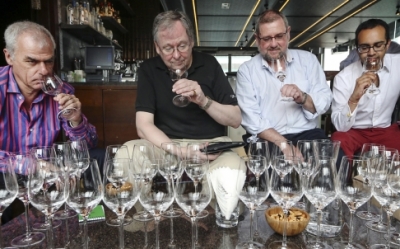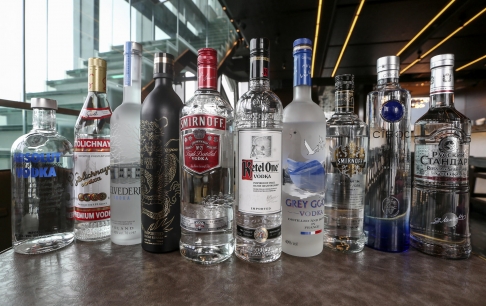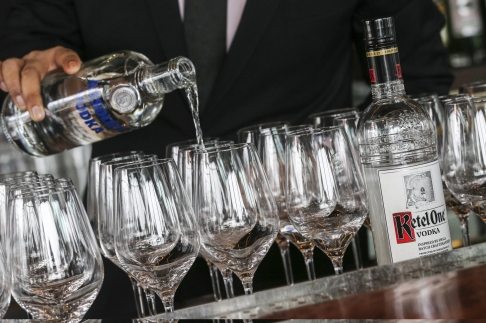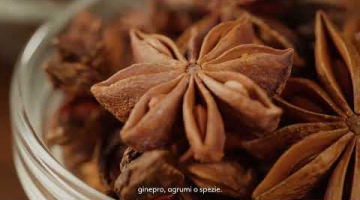Premium vodka is big business, but is there a discernable difference in quality or is it just marketing spin, asks Robin Lynam
s it possible, without looking at the fancy bottles, to make any meaningful distinction between different premium vodkas, or even between those spirits and much cheaper house pouring brands? We thought we'd find out.
SCMP Food and Wine Editor Mischa Moselle convened a six-man panel comprising the two of us, spirits competition judge Ron Taylor, Altaya Wines private client sales manager James Rowell and two laymen, Post reporter Charley Lanyon and insurance industry executive Rohan Muralee.
We met at Mamoz in Causeway Bay and prepared to puzzle our palates tasting 10 vodkas blind.
Producers are allowed to add glycerol to add texture, so that’s probably what you can taste
RON TAYLOR, SPIRITS COMPETITION JUDGE
Moselle had compiled a representative sampling of non-flavoured vodkas, including Absolut, Smirnoff No 1 Red Label and Stolichnaya Red Label - all typically priced at under HK$200 per bottle - and more expensive brands Grey Goose, Belvedere, Russian Standard Platinum, Royal Dragon Elite, and Ketel One.
Also included were small batch premium vodkas Smirnoff 55 Black Label and Ciroc, which is distilled from grapes and is technically an eau-de-vie, but is labeled and marketed as a vodka.
That's quite a spread in terms of cost. Several of the panel members said they kept Stolichnaya as their house pouring vodka at home.
Premium vodka blind tastingNone of us regularly bought premium vodkas for our own consumption, and while we mostly thought it possible to distinguish between premium and ordinary versions of the spirit, all of us were sceptical about the extra cost representing value for money.
Russian Standard Platinum and Ciroc cost almost four times as much as Stoli, but you can pay much more. Moselle said he had considered including Royal Dragon Imperial, which goes for HK$888 at City'super, but thought the flecks of gold leaf floating in it might be a bit of a giveaway.
Mamoz's helpful staff were asked to randomise the serving order so that even Moselle wouldn't know which vodka was which, and we all had to wait until the end of the tasting before numbers were matched to brands. You however will learn them as we go along.
Under normal circumstances nobody drinks warm vodka as a matter of choice, but we tasted them - first neat and then diluted - at room temperature, which shows up flaws that chilling conceals.
"There is nothing objectionable about it," said Taylor with infectious enthusiasm about the first vodka.
"The most you can say is that it has citrus, a bit of a lime taste. Nice creamy texture. Even though there's no complexity it has quite good length on the palate."
Rowell thought it "smooth" and "palatable". I was conscious mostly of an unpleasant burning sensation in my nostrils. It was one of the most expensive, Grey Goose (HK$415).
"Hand sanitiser," said Muralee, thoughtfully sniffing the second vodka.
"I think I can smell white pepper," said Moselle.
"You can taste the alcohol in this, but it's not burning," opined Taylor. "There is much more balance. It's creamier as well. Better texture. The burn comes later. It's a different alcohol profile. It's more sophisticated - and it gets better with water."
Premium vodka blind tastingWe all thought it probably more expensive than the first. In fact it is considerably cheaper - Ketel One (HK$330).
Moselle thought there was a touch of spearmint about the third vodka. Lanyon, who didn't like it at all, noted a certain sweetness. Taylor picked up some anise, and thought the spirit "quite harsh".
"I would say this has been very heavily filtered," said Rowell. "It's the most neutral we've tasted so far. It's hot on the palate, but without having weight."
He also pointed out that the sequence of tasting has an effect on everybody's palate. It turned out that we had tasted workaday Absolut (HK$185) straight after premium Ketel One, which was perhaps unfair. None of us liked it though.
Things seemed to look up with vodka number four. Moselle thought it "slightly antiseptic in a pleasant sense," and several of us detected citrus notes.
Rowell wasn't so keen.
"Heavy filtration and very neutral character defines high quality vodka. That's the one that stands out the most to me, but not in a particularly good way. It smells hot and tastes hot." This was Smirnoff Black Label (HK$305).
Vodka number five, Taylor thought, was lighter bodied and had a good alcohol balance. The panel generally liked it better than number four, which was interesting. This turned out to be Smirnoff Red (HK$160), its immediate predecessor's cheaper cousin.
"That tastes sweet to me," noted Rowell of vodka number six. "Heavy and oily."
"They're allowed to add glycerol to add texture, so it's probably glycerol rather than sugar," commented Ron. "It has a vegetal edge to it."
Rowell and Lanyon both noted a strong burning sensation, and Taylor pointed out that the water amplified it. Step forward, Royal Dragon Elite (HK$298).
"This is very straightforward," said Rowell, approvingly of number seven. "It's a linear vodka."
"Good word," said Taylor. "It's very pure. But now we're searching to find differences." It was Stolichnaya (HK$140).
We weren't searching with vodka number eight. This one all but jumped out of the glass.
"It's paint thinner," said Taylor. "Don't drink it."
Once you got past the turpentine notes, though, the dominant characteristic was citrus. "It's a bit Rose's Lime Cordial," said Rowell.
We wondered whether a flavoured vodka might have slipped into the pack in error, but it turned out to be Ciroc (HK$450) - the only one not made from grain.
Lanyon thought he could smell marzipan in vodka number nine, while Moselle thought black pepper.
Rowell liked the texture. "You get some weight, a bit of oiliness, it's quite smooth," he said. Russian Standard Platinum (HK$450).
Jaded though we were, the last vodka perked a few palates up.
"The alcohol is nicely balanced. It's a well-made neutral vodka," said Taylor.
I noted a satisfying length to the finish. This was Belvedere (HK$380).
Of the spirits at the higher end of the price scale, only Belvedere, Russian Standard and Ketel One emerged as particularly preferred to the two cheapest spirits, Red Label Smirnoff and Stolichnaya.
At the end of the session none of us thought it more likely that we would buy premium priced vodkas for home consumption, although we agreed that we might pay the difference for them as gifts, knowing we were paying for the pretty bottle rather than its contents.
"I think I'll stick to Stoli," said Rowell.
I think I will too. You can get three bottles of Stolichnaya, and some change, for the cost of one bottle of Grey Goose - which I didn't like anyway.
Are premium vodkas a triumph of marketing over taste? The consensus was yes.


















